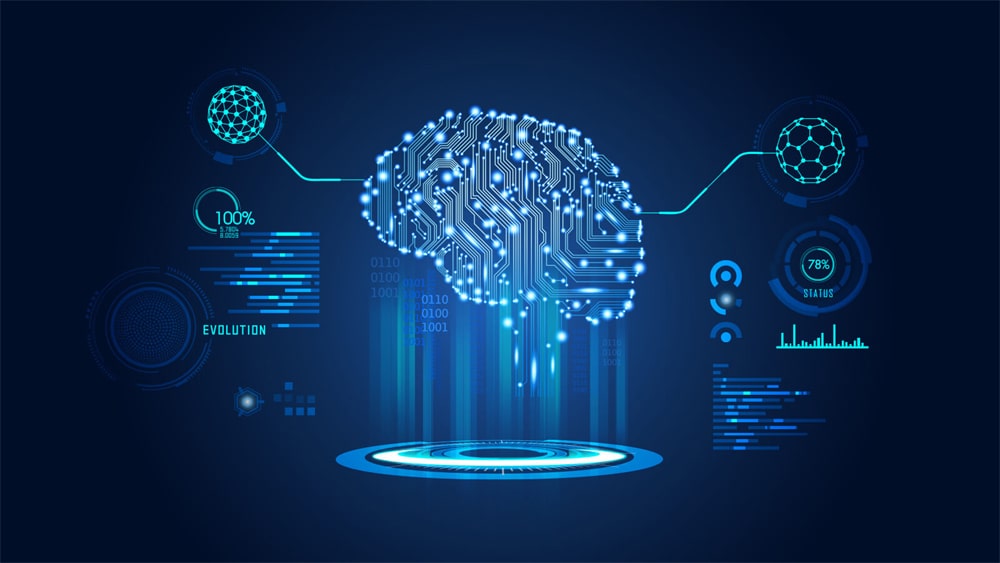
In the field of computer science, there is a relationship between artificial intelligence and machine learning. These two technologies are the most popular ones used to create intelligent systems today.
Although these two technologies are connected and often used similarly, they are nonetheless separate concepts in a variety of situations.
Read: How to Use ChatGPT by OpenAI
Read: What is Bard AI? Google New AI Bard Chatbot?
Artificial Intelligence (AI)
Artificial intelligence is the ability of a computer system to mimic human cognitive functions like learning and problem-solving. Via artificial intelligence, a computer system may imitate human judgment in order to gain knowledge from new information and make decisions.
There are two types of AI services: vertical AI and horizontal AI.
Vertical AI: These services, which may include meeting planning or repetitive work automation, are concentrated on a specific task. Vertical AI Bots handle one specific task for you so expertly that we might mistake them for a person.
Horizontal AI: These services are designed in a way that allows them to handle various jobs. No single task needs to be completed. Some examples of horizontal AI are Cortana, Siri, and Alexa. They are effective for a variety of jobs, not just one specific task.
Machine Learning (ML)
An application of AI is machine learning. It involves using mathematical models of data to help a machine learn without being directly instructed. A computer system can therefore continue to learn new abilities and improve on its own.
One technique for teaching a computer to mimic human reasoning is to use a neural network, which is a group of algorithms modeled after the human brain. The neural network assists the computer system in creating AI through deep learning. The argument between artificial intelligence and machine learning is mostly focused on how these two technologies interact because of their close relationship.
Key Differences between Artificial Intelligence (AI) and Machine Learning (ML)
Artificial Intelligence
- It is now possible for a machine to mimic human behavior thanks to artificial intelligence technologies.
- AI attempts to develop intelligent computer systems that can deal with difficult problems like people.
- With AI, we build intelligent computers that are capable of performing any task in the same way as a human.
- The two main subareas of artificial intelligence are deep learning and machine learning.
- There are different uses for artificial intelligence.
- The aim of AI is to create intelligent systems capable of handling a wide range of difficult tasks.
- The purpose of AI systems is to improve success rates.
- The most well-known uses of AI are Siri, intelligent humanoid robots, expert systems, online gaming, catboat customer service, and others.
- Based on its capabilities, AI can be divided into three categories: weak AI, general AI, and strong AI.
- Learning, thinking, and self-improving are all included.
- Structured, semi-structured, and unstructured data are all handled completely by AI.
Machine Learning
- Machine learning, a subfield of artificial intelligence, allows a system to autonomously learn from previous information without explicit programming.
- The purpose of machine learning is to enable computers to learn from data in order to produce accurate output.
- With ML, we teach machines using data to complete a given task and produce an accurate output.
- Deep learning is an important field of machine learning.
- The scope of machine learning is constrained.
- Machine learning aims to create tools that are only capable of doing the precise tasks for which they were specially developed.
- Accuracy and patterns are the fundamental concerns of machine learning.
- Internet recommender systems, Google search algorithms, Facebook auto friend tagging suggestions, etc. are some of the main applications of machine learning.
- Supervised learning, Unsupervised learning, and Reinforcement learning are the main divisions of machine learning.
- It includes education and self-correction when new knowledge is presented.
- Machine learning is used to process structured and semi-structured data..
Use of AI and Machine learning in Companies
Companies must be able to turn their data into useful knowledge in order to succeed in almost any industry. Companies have the advantage of automating a range of manual procedures involving data and decision-making because of artificial intelligence and machine learning.
By incorporating AI and machine learning into their systems and strategic plans, leaders can analyze and act on data-driven insights more rapidly and successfully.
Artificial Intelligence in Manufacturing
Efficiency is a key factor in a manufacturing company’s success. Artificial intelligence may help industrial leaders improve their business operations by applying statistical analytics and machine learning in applications like the following:
- Using analytics, machine learning, and the internet of things (IoT) to detect equipment defects before they cause issues.
- Utilizing an artificial intelligence (AI) application on a machine in a factory that watches a production machine and forecasts when maintenance needs to be done to prevent failure mid-shift.
- Employing machine learning to analyze HVAC energy consumption patterns and make adjustments for the best possible energy savings and degree of comfort.
Machine Learning and AI in Banking
In the banking sector, data security and privacy are particularly important. Leaders in the financial sector may use AI and machine learning in a number of ways to protect consumer data and improve productivity.
- Cybersecurity and fraud are being detected and prevented using machine learning.
- Using computer vision and biometrics to quickly analyze documents and confirm user identities
- Using intelligent technology like voice assistants and chatbots to automate routine customer service activities.
Uses of AI in Healthcare
To deliver precise, effective health services, the healthcare industry consumes enormous volumes of data and increasingly relies on informatics and analytics. AI solutions can assist healthcare professionals to avoid burnout, enhancing patient outcomes, and saving time.
- Using machine learning to analyze data from users’ electronic medical records to provide automated insights and clinical decision support
- Incorporating an AI system that anticipates the results of medical visits to decrease readmissions and reduce the amount of time patients are held in hospitals
- Utilizing natural-language understanding to capture and record physician-patient conversations during tests or telehealth sessions.
Conclusion
With new opportunities continuously developing, the relationship between artificial intelligence and machine learning offers important advantages for organizations in practically every sector.








